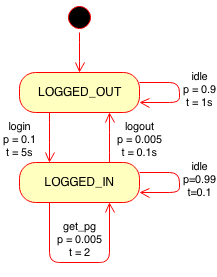Firesafe has just been developed and uploaded to github
Firesafe is a technology to enforce data integrity, and enable complex transactions, on Firebase.
Firesafe compiles hierarchical state machines (HSM) definitions into Firebase security rules. The Firesafe HSM language is expressive, and a super set of the Firebase security language. Adding consistent, concurrent and fail safe protocols to Firebase is now a whole lot simpler (e.g. cross-tree transactions).
Firebase is already the future of databases, offering scalable low latency database-as-a-servie. Firesafe, compliments this amazing technology with an expressive syntax to get the most out of its security model. (Firesafe is not endorsed by Firebase)
Motivation
In multiplayer apps/games, people cheat. It’s a loss of direct sales, AND the free loaders also diminish the fun for everyone else. Multiplayer games are webscale, which means the old solutions to data integrity and transactions don’t work (e.g. SQL).
Firebase solved one problem of the cost of providing low latency persistent data storage to mobile and desktop games. It’s the first scalable NoSQL hosted solution that didn’t suck. It also provided an unorthodox security and transactions abstraction. Turns out that abstraction has enough purchase to do some really cool things not possible in many NoSQL environments. Unfortunately, properly configuring the security layer is extremely verbose and error prone. Firesafe makes it easy.
[…]


